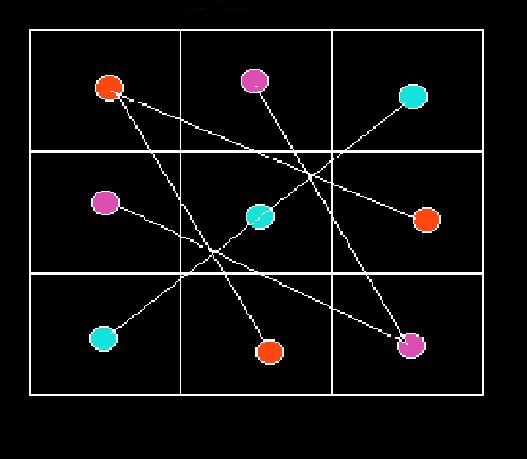

The tables of partial imaginary tuples listed in Part IB, Part IC,
Part IIIC, Part ID and Part IE
are useful, when squared, as right diagonals for magic square of squares.
I will show that the averages of each of two tuple numbers of two lower level tables when multiplied by the magic ratio
(R) of
Let me note here that the second tuple (±i,b2,c2) in each table only the b2 and c2 are multiplied by R. The i, however, is the only numeral which remains as either +i or -i throughout its appropriate table, in a sense initializing the table.
Furthermore, because these tables involve an infinite set of numbers we will use only the 5th row of each table in the conversion of one set of averages into a second set. (Note that odd number rows of tuples upon averaging have half integer values). The method for this conversion employs the following rules:
| Tables N | Tables N* | |
|---|---|---|
| aavgi × R | equals | a*avgi |
| bavg × R | equals | b*avg |
| cavg × R | equals | c*avg |
where N = N1 + N2 equals the average of two Roman Numeral tables (Table T1) for the a, b or c values. I have separated out the as, bs and cs into three different tables for readability.
|
|
|||||||||||||||||||||||||||||||||||||||||||||||||||||||||||||||||||||||||||||||||||||||||
|
|
|||||||||||||||||||||||||||||||||||||||||||||||||||||||||||||||||||||||||||||||||||||||||||||||||||||||||||||||||||||||||||||||||||||
The table shows that as the averages aavg, bavg and
cavg get bigger the products
aiavg × R,
bavg × R and
cavg × R approach and equal the next higher values.
As I said previously the magic ratio (R) behaves similarly to the Fibonacci golden ratio, but however, on a much larger scale since it involves multiplying an infinite number of three part tuples by the the magic ratio (R) within an infinite number of tables.
This concludes Part IF. Go to Part IIF for results employing the sixth row of two table.
Finally to see what started it all go to Part IG which lists the new set of magic square of seven squares.
Go back to homepage.
Copyright © 2016 by Eddie N Gutierrez. E-Mail: enaguti1949@gmail.com